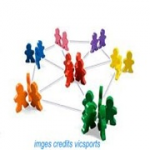 “Social Media” is the buzzword for 2012 and is expected to be the new norm for human relations in all spheres of life. From the way we communicate with each other to sharing information, doing business, engaging in politics, reading the news and even shopping, social media is re-writing the rules and changing the terrain of our daily lives. Just as you started getting your head around email conversion and email migration, avenues of communication via Twitter, Pinterest and Path are fast on the way to making email obsolete. The seminal events of 2011 and early 2012 were in large part shaped and created by social media such as Facebook, Twitter and Youtube, so much so that governments have attempted to restrict and even shut down citizens’ access to the Internet. Police and intelligence services have started to monitor traffic on popular social media sites and more and more companies are starting to realize the wealth of consumer information to be had there. So what’s in store for social media? Is it a fad or a new way of relating? Here are some thoughts on the future of social media.
“Social Media” is the buzzword for 2012 and is expected to be the new norm for human relations in all spheres of life. From the way we communicate with each other to sharing information, doing business, engaging in politics, reading the news and even shopping, social media is re-writing the rules and changing the terrain of our daily lives. Just as you started getting your head around email conversion and email migration, avenues of communication via Twitter, Pinterest and Path are fast on the way to making email obsolete. The seminal events of 2011 and early 2012 were in large part shaped and created by social media such as Facebook, Twitter and Youtube, so much so that governments have attempted to restrict and even shut down citizens’ access to the Internet. Police and intelligence services have started to monitor traffic on popular social media sites and more and more companies are starting to realize the wealth of consumer information to be had there. So what’s in store for social media? Is it a fad or a new way of relating? Here are some thoughts on the future of social media.
Crowd Sourcing … for Everything
Crowd sourcing is a way of getting immediate feedback and reviews by a community of users and is becoming a popular way for companies to test, market and refine their products. Crowd sourcing is also how opensource computer applications get tested, de-bugged and improved upon. Social media experts predict that crowd sourcing will become the main way people shop for the things they want. For example, when you want to eat out, you can use a social media app to see recommendations from friends or get immediate feedback on a particular restaurant. It is also becoming an increasingly popular way for angel investors and foundations to allocate funds, as members can vote for the projects that they would like to see funded.
Get Touchy
More and more gadgets are moving away from input devices like the mouse and moving towards touch screens, the new iPad being one of these gadgets. Mashable, the enterprise that stays on top of the latest trends in technology, not only predicts that touch screens is the way to go, they are also championing a new screen technology, what they call “a new form factor”, that you can bend, twist and unroll without breaking and without any distortion to the image on the screen. The advantage of a flexible screen is that it frees users from the fixed screen sizes of computers, tablets and smart phones, enabling you to increase or decrease your screen as you see fit, to accommodate large articles or smaller content.
Omnipresence. Big Brother Goes Social
Social media will be everywhere. It will be so ubiquitous that eventually you won’t even notice its presence. You will be able to pass by your friend’s house and automatically see on your iphone whether he is home or not. By the same token, police, military, and intelligence services, as well as marketing and public relations firms, will be able to access more information on you almost instantaneously in a way that would have been impossible even five years ago. The technology that connects our every move and thought with each other also reveals them to entities who have a vested interest in this information, whether it is to sell to us or to monitor us. Perhaps this is the most salient feature of a social media future: that what we once thought was only our business has now become everyone’s business.
Author Bio: Tom Mallet is an Australian freelance writer and journalist. He writes extensively in Australia, Canada, Europe, and the US. He’s published more than 500 articles about various topics, including email conversion and email migration.





The field of the social media shows no signs to lose even small part of its world-wide reputation, on the contrary- presumably, this sperading popularity tendency will continuously increase in future. Socail media is part of the globalization process, a way to feel connected with the rest of the world, removing the distances and the differences between the people.
Social Media was initially used by users for connecting with their friends, sharing interesting and funny things and enjoy free times. But now it’s been considered as top place for marketing your business, stay up to date about your interests, connect with people across the world and so on.
Nice article.Social media is very effective to get crowed sources any business.Thank you very much.
Nice article.Social media is very effective to get crowed sources any business.Thank you very much for sharing.
I totally agree. Social media is the best site to have a good business also a good site to find leads. I had a good success using the social media in my business specially Facebook and LinkedIn.
great post, now the social media network is driving by Facebook and his future is bright. i also like the way the competition between social network companies is hard. we will always take an advantage of this rude competition.
Socialmedia has changed the way we live our lives. Soon we will spend our whole day on Facebook, doing everthing from shopping, watching movies, reading books, getting news updates, playing video games, and socializing with friends.
The future of social is very great in but in future peoples are very busy awesome article
Social Media has hit the mainstream these days, personally, I don’t like it. tracking cookies..etc
Social media is useful to make your posts go viral. With Google Panda and Penguin update it is important to use Social media for your blogs.
Initially social media was used by users for connecting with new people, friends and relatives. But now social media is used by the people for their business purposes and connecting to different people worldwide to share marketing experiences.
We are used to live in a techno based era and it’s giving us a huge support to make our life more stylish and easier. It helps to make us closer with the peoples of different corners of the world with updates. Thanks for sharing your wise opinion.
Initially social media was used by users for connecting with new people, friends and relatives. But now social media is used by the people for their business purposes and connecting to different people worldwide to share marketing experiences.
Today social media is one of the best activities to get connected with new people online. The Future of social media is very strong. I think this should be a good idea for any online promotion.
I completely agree social media is very powerful.This is the best way to promote the business as number of people are connected to social media.I had a good success using social media.